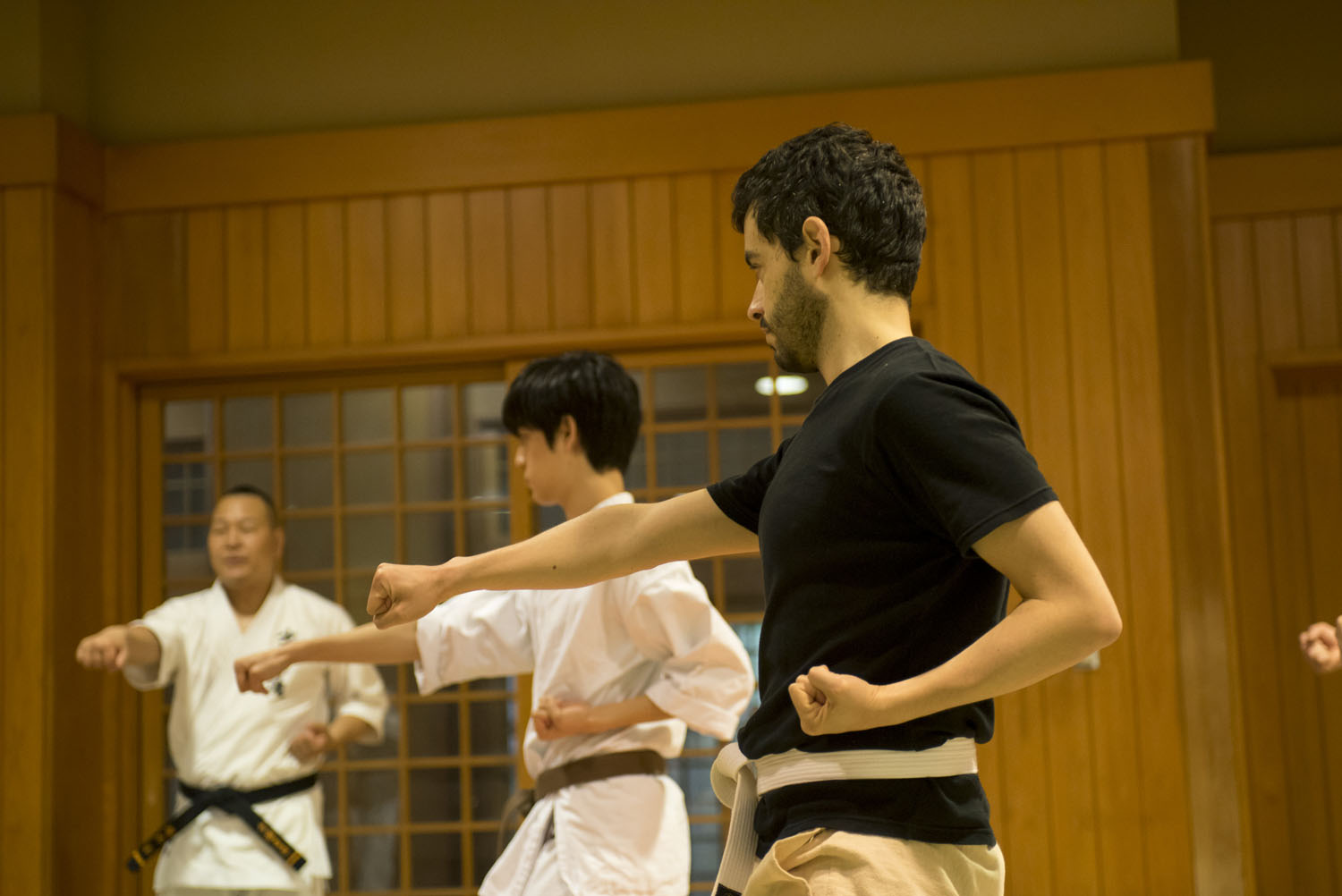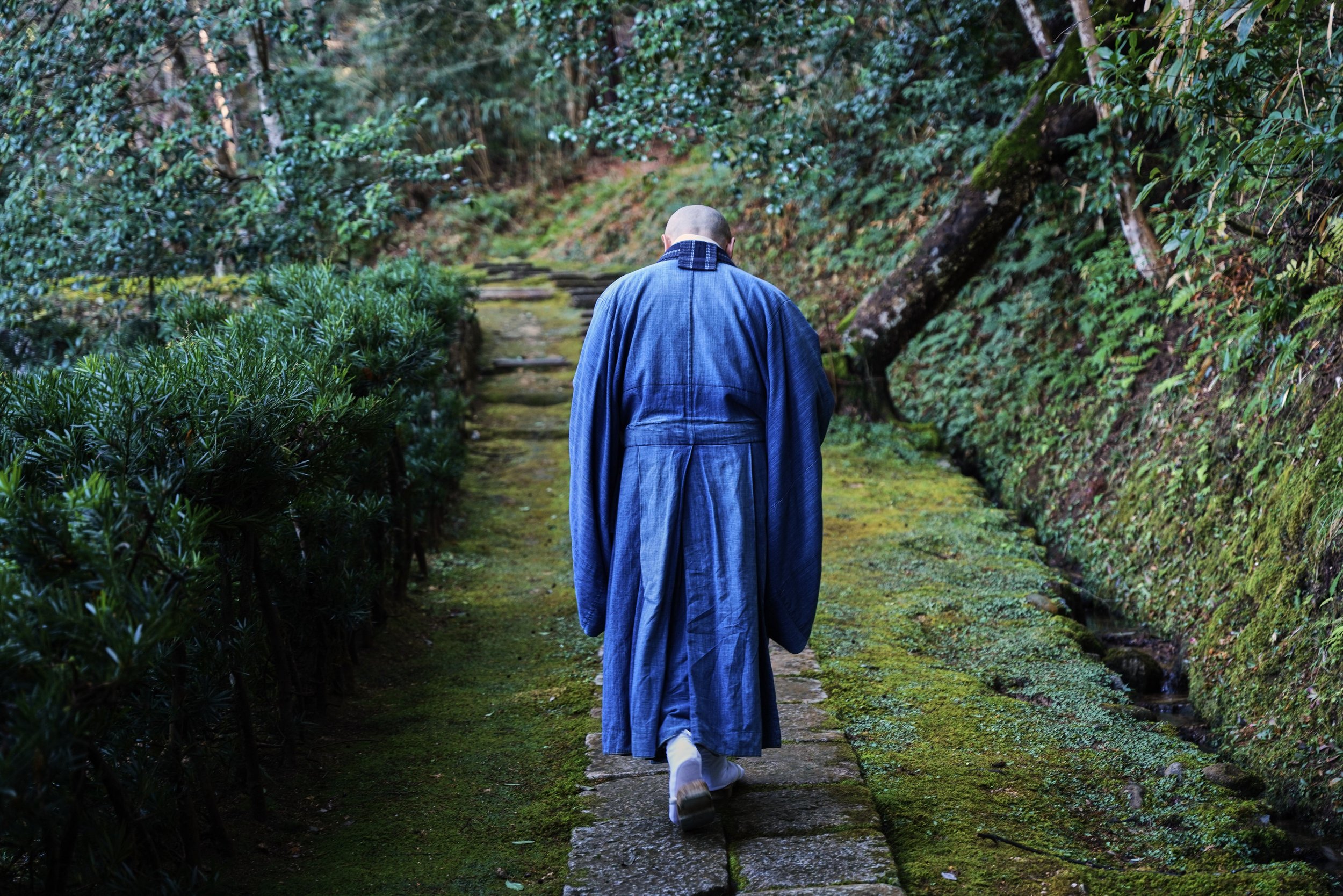The Mind of No-Mind: Zen Buddhism, Samurai, and Martial Arts in Japan
By Nikolas Broy
“My style? You can call it the art of fighting without fighting.” Martial arts fans across the globe are familiar with Bruce Lee’s most iconic expression, which he employed so famously in the 1973 instant classic Enter the Dragon that cemented his position as an icon of East Asian martial arts. In this definitive scene, a bully challenges Lee, eager to see something of his paradoxical fighting style. Rather than immediately engage in a brawl, however, Lee tricks the challenger by promising to fight him on a small island. As soon as the bully enters the boat that should have brought the two to the island, Lee loosens the mooring line, setting his opponent adrift with no chance to come back and stir up trouble. Hence, Lee won the battle without the slightest movement and used intelligence rather than brutal force.
Bearing striking resemblance to this scene is a story told by Japanese essayist and Buddhist practitioner Suzuki Daisetsu Teitaro 鈴木大拙貞太郎 (1870-1966), commonly known in the West as D.T. Suzuki. While crossing Lake Biwa on a boat, the famous sword master Tsukahara Bokuden 塚原ト伝 (1489-1571) is said to have encountered a pretentious and arrogant samurai who sought to challenge his fencing skills. Unwilling to proceed, Tsukahara tricked the pretender like Lee would do five hundred years later in Enter the Dragon. Accordingly, Tsukahara referred to his style as the “school of defeating [someone] without using one’s hands” (mutekatsu-ryu 無手勝流)—clearly reminiscent of Lee’s “fighting without fighting.”
The History Behind Zen Martial Arts
East Asian movie fans and martial arts practitioners have often attributed this epochal scene from Enter the Dragon to Bruce Lee’s profound knowledge of Daoist and Buddhist philosophy, particularly Zen. And indeed, one of Lee’s sources of inspiration was the enormously influential writings of D.T. Suzuki. Especially in the aftermath of World War II, many notable figures, such as Alan Watts, Jack Kerouac, and other members of the Beat Generation, looked eastward to find moral-spiritual solutions in Asian religious and philosophical traditions including Confucianism, Daoism, and Zen.
However, before Bruce Lee brought the philosophy to his craft and world of cinema, Zen and Japanese martial arts had been evolving in conversation for over 500 years. Far from the only or most important religious or philosophical tradition in which premodern Japanese warrior culture was embedded, the relationship between the two is not as straightforward as is often suggested. Through interactions with Japan's diverse religions and philosophies and through the outside influence of Western perception, Zen has undeniably played a significant role in shaping Japanese warrior culture, with both traditions becoming thought of as inseparable.
Religious and Philosophical Landscape of Japan’s Warriors
In medieval Japan (ca. twelfth to early seventeenth centuries), the samurai and warriors (bushi 武士) employed a variety of religious means to ensure victory on the battlefield, gain divine protection, and cope with the traumas of warfare and killing. They worshipped Buddhist deities and bodhisattvas (enlightened beings) to aid their causes. Among them, Indian deity Marishiten 摩利支天 (from Sanskrit Mārīcī) was particularly important and evolved into the tutelary god of the warriors. They used incantations, spells, sutra recitations, “magic” gestures, and rituals to obtain superhuman protection or achieve invisibility. They also used the small rite of “cutting of the nine characters” (kuji kiri 九字切り), which is still widely popular in Japanese esoteric Buddhism and Shugendo but is also rooted in Chinese Daoism. This rite comprises nine mudras and nine words performed synchronically to summon divine protection against all evil beings. Against this background, it is hardly surprising that the oldest extant martial arts curriculums rarely mention Zen, instead referring to diverse Buddhist elements, Daoism, Confucianism, deity worship, and other esoteric practices.
In fact, historians and martial arts studies scholars have shown that Zen evolved into a critical element of warriors’ identities only beginning in the more peaceful Tokugawa period (1603-1668 CE). In contrast to the perilous times of civil war and social upheaval during the preceding Sengoku Period (roughly 15th and 16th centuries), combat skills and the need to kill enemies on the battlefield were no longer crucial. As the samurai evolved into local bureaucrats not expected to demonstrate martial prowess, they had the leisure to think about their identities and societal roles. Pioneer of martial arts studies Donn Draeger (1922-1982) once referred to this process as the “civilizing of the warrior class,” and Japanese social historian Ikegami Eiko 池上英子 called it the “taming of the samurai.”
It is only in this new social context that the concept of bushido 武士道 first emerged in the seventeenth century. This demonstrates that some warriors were beginning to interpret their craft in more spiritually oriented ways that were not apparent in earlier centuries. Further, it has less to do with Zen than it does with Neo-Confucian virtues, such as loyalty (chusetsu 忠節), righteousness (seigi 正義), bravery (yuki 勇気), and sincerity (shisei 至誠). Some contemporaries even conceptualized the ideal samurai as a “great man” (daijobu 大丈夫). While this term is used in modern Japanese in the sense of being “okay” or “fine,” it is originally derived from Chinese Confucian classics, especially the Mencius (Mengzi 孟子, Jap. Moshi), where it depicts the perseverant, die-hard man of moral greatness who does not rest on his path towards moral perfection.
Also during the newfound stability of the Tokugawa period, the Rinzai 臨済 Zen monk Takuan Soho 沢庵宗彭 (1573–1646) penned his most widely known work Fudochi shinmyoroku 不動智神妙録, commonly known as The Unfettered Mind. Rather than writing a technical manual, the monk - who had no expertise in martial arts whatsoever - explored what he perceived to be similarities between swordplay and Zen. To counter the tendency of the mind to rest on certain sights, emotions, and ideas, Takuan explains, both the Zen practitioner and the fighter need to employ the “mind of no-mind” (mushin no kokoro 無心の心). This mindset, he argues, enables practitioners to free their minds from attachments, discriminations, and conceptualizations that otherwise constrain them. Like water, the mind of no-mind flows and responds to situations naturally.
It is crucial to note, however, that Takuan does not claim that perfecting one’s martial arts skills by employing this mindset is the same as practicing Zen, as their spiritual aims differ. Yet, his treatise proved immensely influential in shaping the evolving relationship between Zen and martial arts in Tokugawa Japan. For instance, Takuan dedicated this piece to his student, the famous swordsman Yagyu Munenori 柳生宗矩 (1571–1646 CE), who served as a sword-fighting teacher of two Tokugawa shoguns and wrote an influential treatise on his own. English readers commonly know it as “The Life-Giving Sword,” rendered after one of its three chapters, which is entitled katsuninken 活人剣. Paired with the “killing sword” setsuninto 殺人刀, the two terms are derived from the Chinese Zen classic Record of the Blue Cliff (Hekiganroku 碧巌録), where they are used metaphorically in various ways, such as killing delusion and creating realization. Similarly, Yagyu argues that swords cannot merely terminate lives but can be used to overcome an opponent without killing—an idea that strongly mirrors the tactics employed by Bruce Lee and Tsukahara Bokuden.
The “Zenification” of Japanese Martial Arts
Bruce Lee's Enter the Dragon is just one example that Western practitioners of East Asian martial arts draw upon to demonstrate Zen’s profound influence on their craft. In fact, one will find a plethora of publications that share this assumption, including Chuck Norris’ 1996 The Secret Power Within: Zen Solutions to Real Problems and C. W. Nicol’s 1975 Moving Zen: Karate as a Way to Gentleness. Similarly, the US blockbuster The Last Samurai (2003) portrays its protagonists, the traumatized US army captain Nathan Algren (Tom Cruise) and Lord Moritsugu Katsumoto (Ken Watanabe), engaging in a discussion about bushido, that teaches us to “know life in every breath, every cup of tea, every life we take” because like blossoms, “we all are dying.”
Despite this proliferation in the use of Zen by Western martial arts practitioners, many of the concepts and values attributed to Zen actually belong to Japan’s other diverse religious and spiritual traditions. This “Zenification” of East Asian martial arts (and other cultural traditions) can be attributed to the biased and sometimes “distorted” interpretations of Euro-American recipients.
In the latter half of the twentieth century, Buddhism (especially Zen) and Daoism were depicted as spiritually embedded solutions to moral and ideological problems of the supposedly more materialistic cultures of “the West.” In the wake of Edward Said’s seminal work, “Orientalism,” about how early modern Europeans created imaginations and stereotypes of “the Orient,” generations of academic scholars have critiqued these Western interpretations of East Asian traditional thoughts and practices as “Orientalist.” In a similar vein, some scholars propose that the Zen connection to East Asian martial arts also represents a product of an Orientalist gaze projecting stereotypes and misconceptions onto East Asian bodies and traditions.
These studies show that the ideal of the tranquil and focused samurai trained in zazen 座禅 meditation and forged ethically by the famous “warrior code” (bushido) are modern inventions of imagined pasts that have never existed. Indeed, scholars such as Oleg Benesch have demonstrated that this image was forged during Japan’s transition to a modern and powerful nation-state in the latter half of the nineteenth century. This process owes to nationalistic and, ultimately, militaristic aims to create the ideal loyal, obedient, and fearless soldier ready to do whatever it takes to protect the motherland and its interests. Although this reimagining of the samurai is Japan's reflection of and response to Western power, it too can be considered an act of “Zenification” and a product of auto-orientalism.
In this same vein, we can contextualize and reconsider the examples of Bruce Lee and Tsukahara Bokuden. The idea of “fighting without fighting belongs to the Buddhist approach commonly known as “expedient means” (Japanese: hoben 方便), which describes the superior mind of a highly cultivated Buddhist practitioner who uses appropriate methods to help or teach people who might otherwise be unable to understand. The most famous expression of hoben can be found in the popular Lotus Sutra, where a father of three lies to his kids trapped in a burning house to help them get them out. Unwilling to leave the house (because they don’t see the danger yet), he promises that they will receive three beautifully decorated toy vehicles when they leave the house. Once they are safe, however, the father reveals that there are no toys. Rather than merely tricking the children, the story conveys that one needs to think outside the box to save lives, even if it means that the end sometimes justifies the means.
Accordingly, Lee’s and Tsukahara’s tricks do not exhibit some sort of “Zen spirit” but rather an intelligent means to win a battle by simultaneously preventing violence and teaching a lesson. These stories are not so much about Zen specifically, rather they exemplify a concept widely popular across various schools of Buddhism and East Asian thought.
Zen, Martial Arts, and Modern Times
From the Tokugawa period onward, monks and martial artists began to explore their crafts in Zen terms. Yet, as seen through the lens of Lee's legendary scene in Enter the Dragon and the tale of Tsukahara Bokuden, the history of Japanese martial arts cannot be reduced to simply embodying the “Zen spirit.” It is the outcome of Japan’s rich tapestry of diverse religious and philosophical traditions. From the historical importation of Buddhism, Daoism, and Confucianism, to the modern construct of bushido and orientalist Zenification, the image of the Zen warrior is as much a product of historical context as it is a contemporary construction.
More than this, the relationship between Zen and martial arts demonstrates that the religious, philosophical, and even aesthetic traditions of Japan do not fit perfectly into discrete categories. Rather, each influences the other, a fact often overlooked when the culture is exported to the West. What is clear, however, is the lasting impact that Zen has played on the West’s imagination of Japan. As Western culture and media continue to inform contemporary Japanese sensibilities, so too will the image of the Zen warrior change in response, almost as if heeding Bruce Lee’s famous wisdom—to “be like water.”
About the Author: Trained in Religious Studies and Chinese Studies, Nikolas Broy’s work engages with religion in East Asia, especially Buddhism, non-official religious groups and “sects,” religion and food, material aspects of religion, and globalization. During his research in Japan, he explored various aspects of Japanese religious culture, including “martial monks” in medieval Japan to contemporary Sino-Japanese new religious movements.










